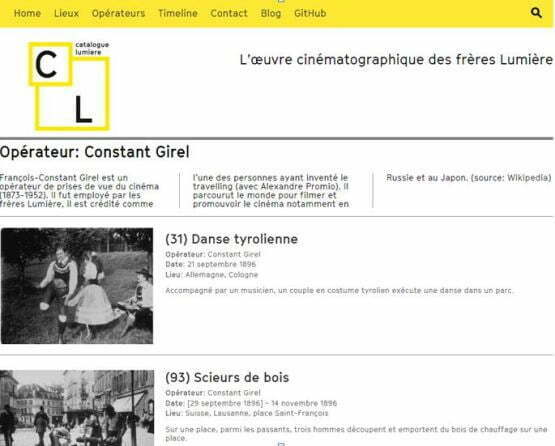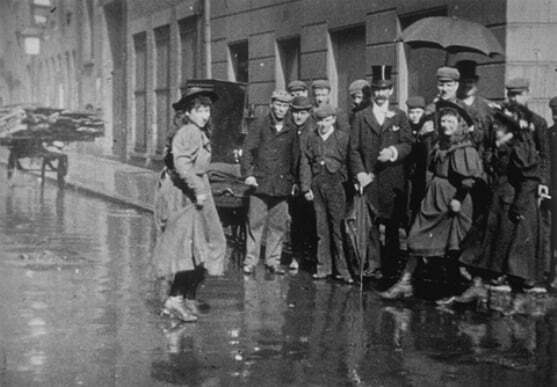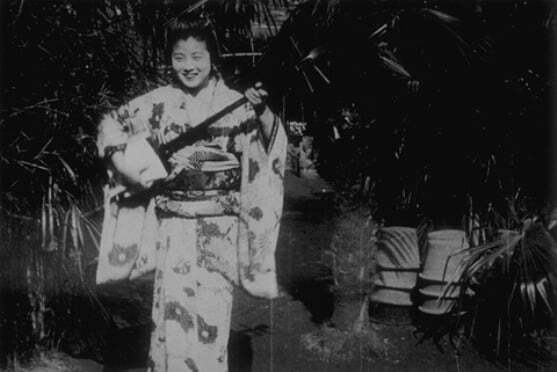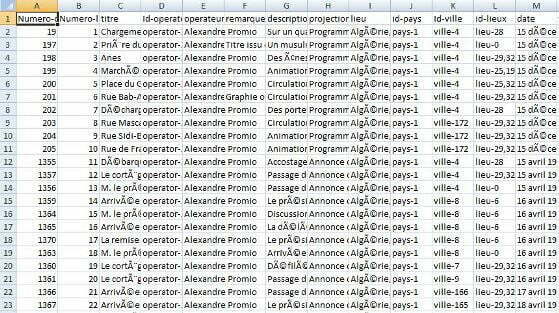
Well, no sooner had I written that there was no website good or bad devoted to the films of the Lumière brothers, then someone quite coincidentally tells me of one – and it is superb.
Catalogue Lumière is exactly what it says, a catalogue of the films made by the Lumières between 1895 and 1905. There were 1,428 of them, 18 of which are considered lost. In 1996 a comprehensive book catalogue was published, La production cinématographique des Frères Lumière, edited by Michelle Aubert and Jean-Claude Seguin, and published by CNC and the Bibliothèque du Film. Thorough and trustworthy in its assigning of dates, credits, technical details and descriptions, and very well indexed, I turned to it again and again over the years.
Catalogue Lumière is a database derived from this book. The Lumières were punctiliously exact in how they maintained the catalogue of their films, and every film which made it into the catalogue (not every film shot by a Lumière operator did) was assigned a number and a title and was categorised by place and/or theme. The Aubert/Seguin catalogue adds to this original descriptions (from contemporary descriptions), name of the operator where known, date of filming (or date range), location, subject, series of which the film was a part, notes on programmes which record when the film was shown, and information on what film elements survived (a large number of original negatives survive for Lumière films, hence the high quality of the digital restorations on the recent DVD release).

The web version of the catalogue reproduces all of this, but adds extra features. Every film is illustrated with a still, is placed on a timeline, and each record comes a Google map, though most locations have not been identified on this as yet as there is an invitation for users to contribute information. All locations and other keywords are hyperlinked, greatly improving on the indexing of the book, and in particular you can browse the catalogue by place or operator. The catalogue proper is in French, but there are background texts in English and promises of more English to be added in time. Crucially there is an individual web page per film. This is essential for proper citation, and though I would have liked to have seen the Lumière catalogue number included in the URLs, it shows that this catalogue was put together by someone who knows their data as well as they know their film history.

That person was Manuel Schmalstieg, who describes himself on the site as a “media artist, designer-developer, cinema lover, free software & open culture enthusiast”. The site seems to have been undertaken as a free culture, open data exercise, and was developed by students at the Conception Multimédia de l’Ecole d’Arts Appliqués de la Chaux-de-Fonds, under Schmalstieg’s direction, earlier this year.
Having chastised those who care for the Lumières’ legacy for being over-protective, it is heartening to see the Lumières’ work contributing to such an open data exercise – not least because the Lumières’ precision of production has helped create a consistent digital resource. I don’t know the degree to which Lumière’s guardians have supported this initiative, but they ought to be delighted by it. Of course, the ideal next step would be to have the films themselves on their appropriate web pages, and I am sure that the right people will be thinking of this…

Being as this site was created by a data developer, there is a version of the data which can be downloaded via GitHub, namely a full catalogue listing in CSV format, meaning that anyone can go and build their own version, visualisation or analysis of the database (CSV means Comma Separated Values and you can open it as an Excel spreadsheet). To the best of my knowledge, this is the first archival film catalogue to have been made available in this way (the original book came with a CD-ROM containing all the catalogue data, but as Schmalstieg notes, it doesn’t run on current operating systems). The Pathé catalogue is available online, as is the American Film Institute’s silent film database, and some digitised and word-searchable original film catalogues can be found on the Media History Digital Library, but I think this is a first for an archive film catalogue as reusable data. There are some out there thinking to do likewise, I know, and I hope this initiative will encourage more to follow suit. Films were made for distributing.
This is a great catalogue, because it understands how catalogues work. They are not just lists; they employ consistency to show the reliable relationships between discreet identities. It is based on an excellent book whose only faults were a slightly confusing chronology and an absence of images. Catalogue Lumière bypasses the first and rectifies the second. Long may it last, and grow.
Go explore.
Very cool. RE ‘I think this is a first for an archive film catalogue as reusable data. There are some out there thinking to do likewise, I know, and I hope this initiative will encourage more to follow suit.’ Yes.
I’ve heard those rumours…